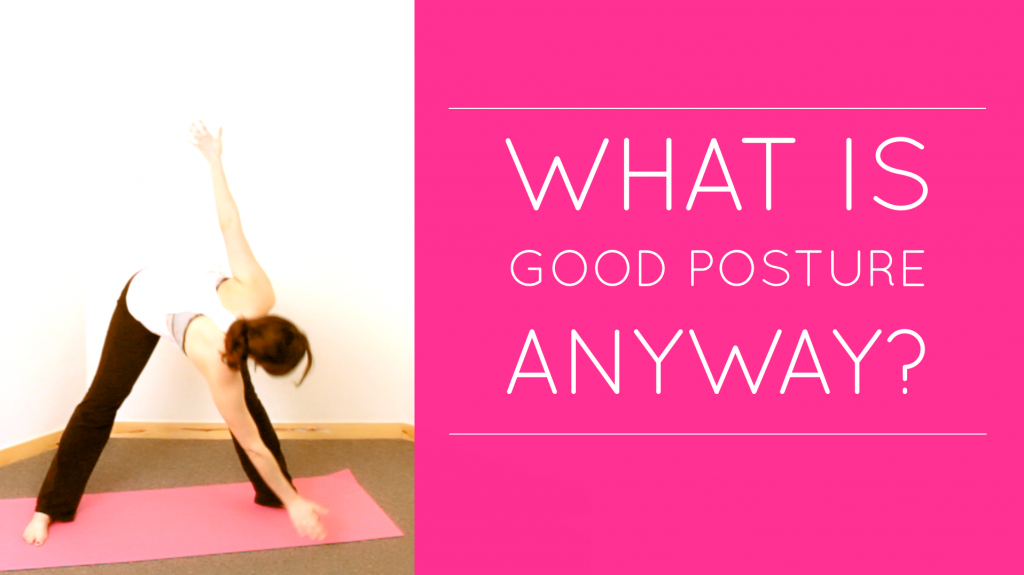
The word “posture” gets thrown around a lot. We talk about it in reference to how we sit, how we stand and even how we present ourselves in social situations.
But what does “good posture” even mean? Usually when we talk about posture, we’re referring to a static “pose,” but you’re not a stationary being. You have to be able to bend, move, twist and function in the world.
Before you can start to fix your bad posture, you’ve got to know what good posture looks like. And I’ve got a hint for you…it’s about much more than a single snapshot in time.
Let’s Redefine the Word “Posture”
How to Fix Your Posture
The biggest misconception about posture is that there is one single ideal that suits every person.
Good posture goes deeper than shoulders back, belly in. Truly functional posture relies on muscular efficiency that maximizes movement potential for a given activity.
What that means is that you’re strong enough to support your body in an upright position and in any desired movements (like dance or martial arts) without excessive muscular density that “binds” your body. All of your joints should move freely. The impact of movement should travel through your structure like water in a stream.
Locked or fixed joints are like rocks in that stream. They create interruptions, friction and waves. They block the flow of movement. These stuck or stagnant places are usually where the body breaks down – joints degrade, muscles spasm, and, ultimately, injury occurs.
Restoring your body’s ability to absorb shock and allow movement to translate through it makes you more resilient. This kind of “posture” is ideal for transitioning from one activity to another.
The only bad kind of posture there is is the one that you’re stuck in. Good posture, rather than being some kind of ideal we can all aim to achieve, is really having a set of options. It’s being able to perform an activity like dance, yoga, weight lifting, or sitting at a computer, and then get up, walk away from the activity and not be stuck in that shape.
The people with the best posture are shape shifters in the most literal sense.
A Simple Exercise to Improve Posture
While truly fluid posture is something you can constantly hone and evolve, you’ve got to start somewhere. And your spine is a good place to start.
A stiff spine doesn’t allow movement from your feet to translate through your back and core, so the movement gets stuck halfway through, creating more and more muscular density.
Remember, density without resilience is the enemy. So, we want to restore your body’s natural shock absorbing function – contralateral movement. This is the inherent twisting of your spine, like wringing out a rag, that happens when you walk (or crawl, for that matter).
This simple exercise reminds your spine that it can bend, flex and twist all at the same time, and it lubricates your joints while also bringing hydrating fluids into the muscles of the back and spine.
1. Stand with your feet quite wide.
They should be two to three feet apart depending on your height.
2. Spread your arms out to the sides.
Keep your shoulders relaxed and down as you do this – no shrugging up toward your ears!
3. Bend at the hips and rotate your body to the opposite side.
You’ll touch your right hand to your left foot and vice versa. The bending should come through the hips, so lift your tailbone toward the ceiling as you fold forward, allowing your rib cage to rotate with your arms.
Voila! Contralateral movement restored.
This is a great warm up prior to exercise, or just a good way to wake up your stiff back in the morning.
Leave me a comment below if you have any questions, and if you haven’t already, join the thousands who have signed up to get the Weekly Reboot delivered fresh to their virtual doorstep each week. Enter your email in the box below and I’ll also send you 5 Secrets for a Pain-Free, Flexible Body. You can cancel at any time (but I’m pretty sure you’ll love it).
[sc name=”ppfl-cta”]
